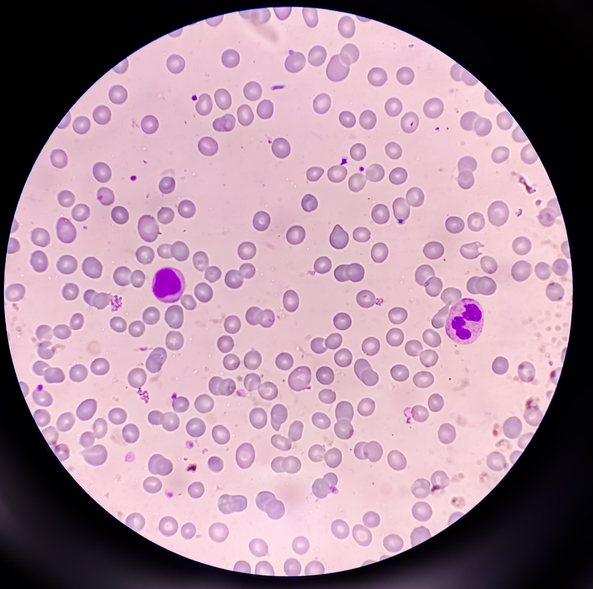HHV-6 was the most prevalent virus in febrile neutropenia episodes among pediatric patients.
Chemotherapy to treat malignancies often causes neutropenia (decreased neutrophil white blood cells) which renders patients vulnerable to bacterial and fungal infections. Therefore, neutropenic individuals who develop fevers are routinely tested for bacterial and fungal infections.
However, although it still is controversial, neutrophils probably also play a role in containing viral infections. And in other immunocompromised people, such as recipients of hematopoietic stem cell transplants (HSCT), reactivated viral infections are common and can cause disease.
A multi-institutional team from Austria (Obrova et al) investigated 234 febrile neutropenic episodes in 77 and 69 pediatric and adult patients, respectively. Each person was screened repeatedly using RQ-PCR for the presence and quantity of CMV, EBV, HHV-6, and adenovirus (HadV), as well as for bacterial and fungal infections.
Viremia with at least one of these viruses was documented in 36 (15%) febrile neutropenic episodes. HHV6 was detected in 14 episodes, EBV was detected in 5, CMV was detected in 6, and adenovirus was detected in 1. HHV-6 was detected much more frequently in the pediatric cases than the adult cases.
Among the episodes in which HHV-6 was detected, viral loads were mostly of low (1000 copies/mL) to intermediate (1000-10000 copies/mL). None reached levels suggesting inherited chromosomally-integrated HHV-6. With all the viruses, the higher the viral load the less likely was a concomitant bacterial or fungal infection. Indeed, in people with the highest viral loads, there were no co-infections with bacterial or fungal pathogens.
For patients with only HHV-6 infection, viral load was higher when viremia was detected at the start of the fever and in fevers persisting more than 24 hours (Figure 1). In a separate prospective analysis on HSCT patients, similar results were observed.

Figure 1: Associations of viral copy number and fever duration/positivity status at first onset.
These results suggest that viral infection or reactivation may account for a proportion of febrile neutropenic episodes in people receiving chemotherapy for various solid and hematologic malignancies. Of the reactivated viruses studied, HHV-6 was the most common, although this was true primarily in the pediatric patients.
People with the highest viral loads were the least likely to have detectable bacterial or fungal pathogens. Thus, it is plausible that some patients undergoing standard chemotherapy for malignancies who become neutropenic and then develop fevers may have a viral cause of their fevers.
This study indicates that routine screening for viral reactivation, commonly done in patients undergoing HSCT, may also prove to be of value in people undergoing chemotherapy for various solid and hematologic malignancies who develop febrile episodes while neutropenic—particularly if subsequent studies find that antiviral treatment of patients with high viral loads improves clinical outcomes.
Read the full article: Obrova 2021

